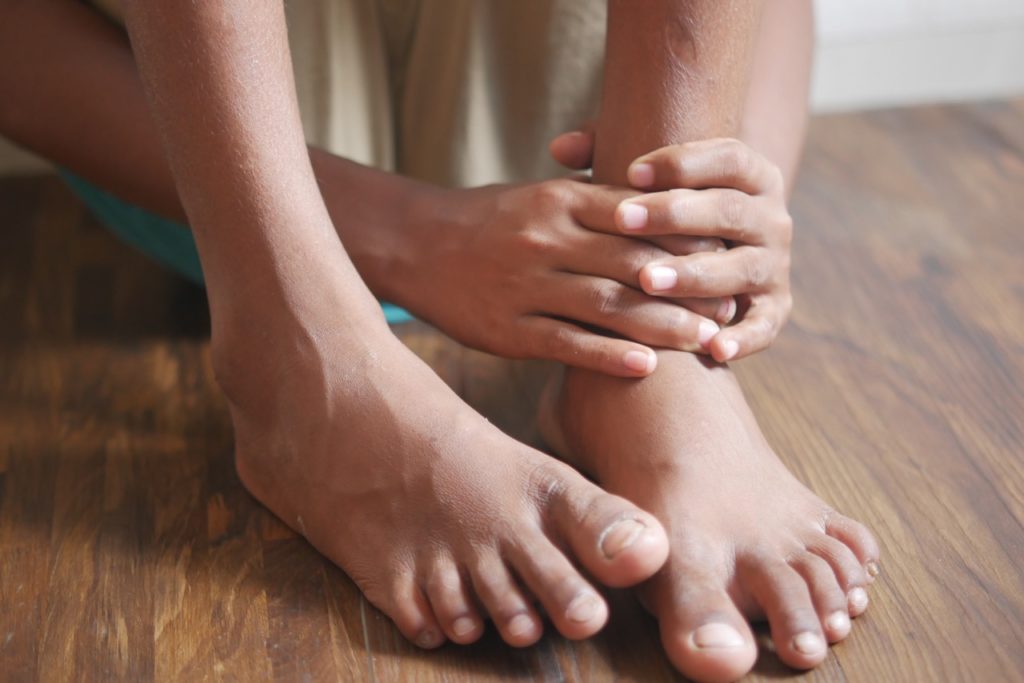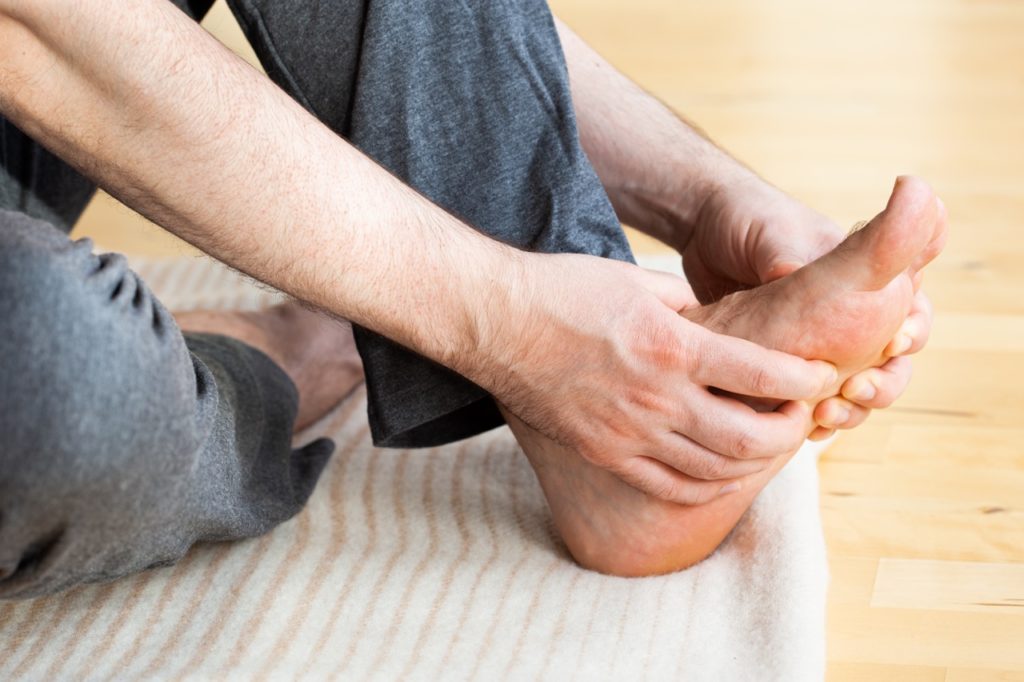Introduction to foot health
Ensuring everyone has excellent foot health should be a priority. Unfortunately, most people don’t take care of their feet as well as they take care of their teeth or hair!
Foot health is crucial for overall health and well-being. When feet aren’t respected with regular health checks, the possibility of problems increases, such as Achilles tendinopathy, plantar fasciitis, heel pain, and arch pain.
Understanding the causes of foot pain is essential for effective treatment and prevention. In this blog, ‘Why do I have a painful arch of my foot’, we explore common issues, and prevention tips.
The foot is a complex structure made up of bones, muscles, and ligaments that work together to bear weight and facilitate arch support and functional movement.
Foot pain can be caused by various factors, including overuse, poor footwear, and underlying medical conditions such as arthritis or plantar fasciitis. As with most areas of maintenance of general wellbeing, regular physical activity and maintaining a healthy body weight can help reduce the risk of foot problems.

Causes of arch pain
Arch pain is a common symptom of various foot conditions, including plantar fasciitis, pronation (flat feet), tendinopathy and supination (high arches). Symptoms associated with arch pain can include pain while walking or standing.
Supporting the arch is a significant thick band of tissue called the plantar fascia. It runs from the heel to each of the five toes phalanges bones.
A physical examination is crucial in diagnosing arch pain, as it helps identify pain, inflammation, and overall foot function. Pronation commonly leads to arch pain and arch support issues, changing the biomechanics of the foot, which increases plantar fascia stress and strain, leading to arch and/or heel pain.
Identifying the underlying cause of arch pain is essential for effective treatment and preventing chronic issues.
Anatomy of the foot
The foot is made up of 26 bones, 33 joints, and over 100 muscles, tendons, and ligaments that work together to facilitate movement. This complex structure bears the weight of the body and helps to distribute pressure and load.
The heel and arch bones play a crucial role in supporting the foot and facilitating function and movement. The arch of the foot is particularly important for shock absorption and weight-bearing, which are essential for both athletic and everyday activities.
Understanding the anatomy and foot function can help identify the underlying causes of foot pain.
Health conditions and arch pain
Plantar fasciitis, also called ‘Policeman’s heel pain’, is a common cause of arch pain and can be treated with physical therapy and orthotics. A high arch can also be a foot condition leading to arch pain. High arches and flat feet can also lead to arch pain and may require custom shoe inserts or orthotics to provide a long-lasting solution to arch and heel pain.
It is important to diagnose the specific foot condition causing the pain to ensure appropriate treatment.
Home remedies for relief
Resting and icing the affected area can help reduce pain and inflammation. Using over-the-counter, pharmacist-advised pain relief medications, such as NSAIDS like ibuprofen, can also help reduce inflammation and provide relief.
It is important to apply ice for 10-15 minutes twice daily to alleviate discomfort and promote healing.
Applying ice packs or warmth to the painful area and rolling out the bottom of the foot with a tennis ball or tube can help ease pain. Also, wearing supportive shoes with arch support can help reduce pain and prevent further injury. These home remedies can help individuals find relief from arch pain.
Heel pain and its relation to arch pain
Arch and heel pain are often connected, and individuals may feel pain in both the heel and arch, which may be caused by plantar fasciitis or other conditions. Swelling can also accompany these conditions. If the plantar fascia heel attachment struggles to support the arch, it becomes inflamed and painful. The surrounding plantar fascia tissue can become inflamed, leading to pain in the arch.
Role of a podiatrist
Correct, accurate diagnosis is always the first step in treatment. Consulting a healthcare provider is crucial for a proper diagnosis. A podiatrist plays a crucial role in diagnosing and treating foot and arch pain.
How Waverley Clinic in Farnham diagnoses and treats foot pain is second to none. The right treatment is crucial for addressing the underlying issues causing arch pain.
A biomechanical examination with a Digital Gait Scan, along with medical history, can help identify the underlying causes of foot pain.
Only following a specific diagnosis can our Podiatrist recommend treatment options such as physical therapy, orthotics and footwear advice.
Treatment options at Waverley Clinic
Treatment options for foot and arch pain at Waverley Clinic may include physical therapy, including Shockwave Therapy, and prescription orthotic inserts. Rest is crucial when one first notices pain, and incorporating rest into the treatment plan can significantly aid recovery. Custom-prescription orthotic shoe inserts help return the foot’s posture and function to where it was before the problem started.
Orthotic insoles also help to correctly support the feet to help prevent further painful issues. Additionally, modifying physical activities, such as avoiding prolonged standing and running, can prevent aggravation of the condition.
Prevention and maintenance
Preventing foot pain and arch pain requires regular maintenance and care. Weight gain can contribute to arch pain by adding stress and strain to the feet. Regular foot health check-ups with a Podiatrist can help identify underlying problems before they become painful. Maintaining a healthy body weight, losing weight if necessary, and engaging in regular physical activity is usually beneficial.
Foot pain and daily activities
Foot pain, arch and heel pain can really make life miserable, especially when standing for long periods of time. Arch pain can also limit your ability to walk comfortably, affecting your participation in exercise and daily tasks. Most of your daily activities, such as walking to the train or shops, standing, running and even painful in bed at night.
Taking regular breaks and resting the feet can help reduce pain and inflammation, especially during long periods of standing.
Stop impact sports activities and try low-impact activities such as swimming and cycling, which can help reduce the risk of foot problems.
Orthotic insoles provide the daily support your feet need to function pain-free on a long-term, daily basis. Returning to your usual daily activities becomes possible.
Prioritise your foot health and put an end to arch pain: Schedule your appointment at Waverley Clinic today!
Taking care of your feet is essential for staying active and pain-free. Wearing supportive shoes, using orthotic insoles, and incorporating stretching exercises are all options to maintain a free life. Following a correct GaitScan diagnosis, the correct treatment option can be discussed, and a treatment plan agreed.
Don’t ignore persistent discomfort—it’s a sign to take action. Contact Waverley Clinic to schedule an appointment with a Podiatrist today.
You can now book online:
Or please call Waverley Clinic to book an appointment:
01252 716611
Seven-day, 24-hour telephone appointment booking service
Don’t let foot or arch pain limit your daily activities any longer. Contact Waverley Clinic and take the first step towards happier and healthier feet today!

